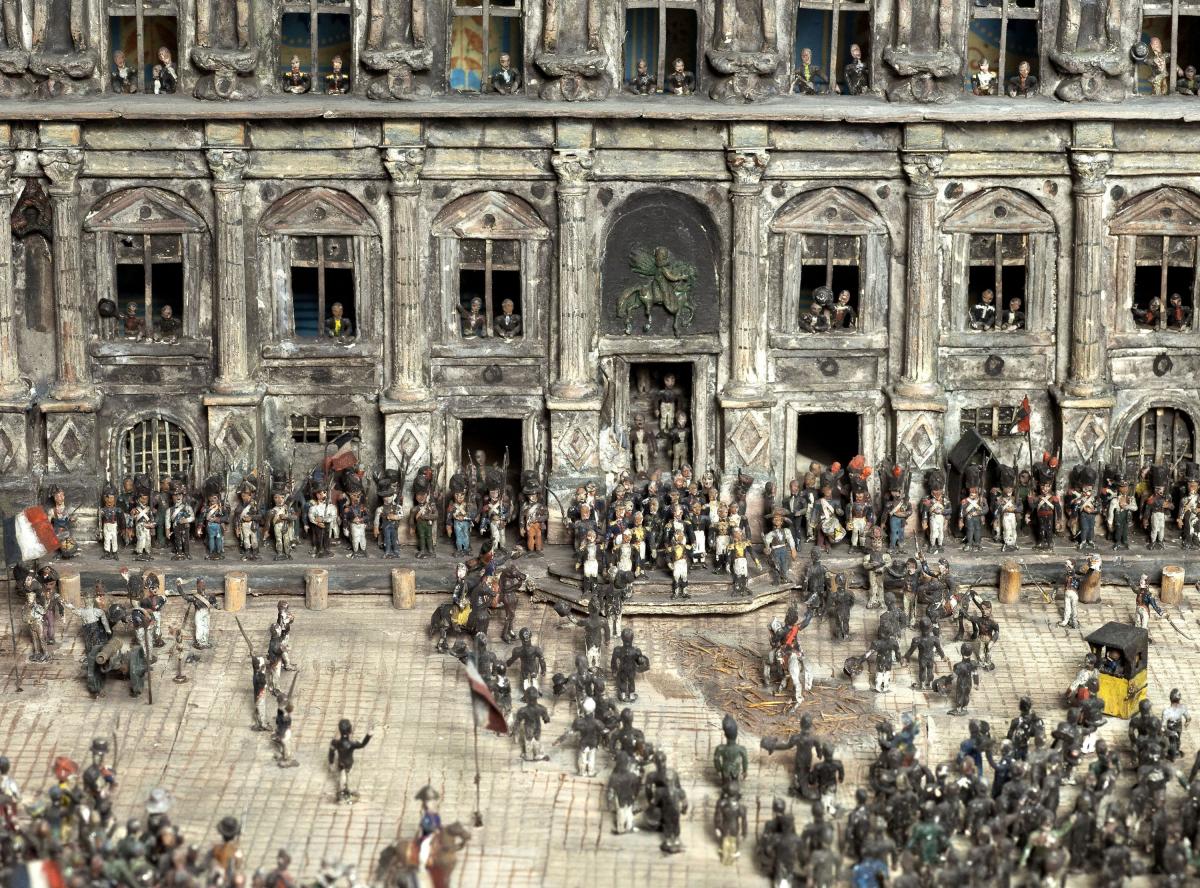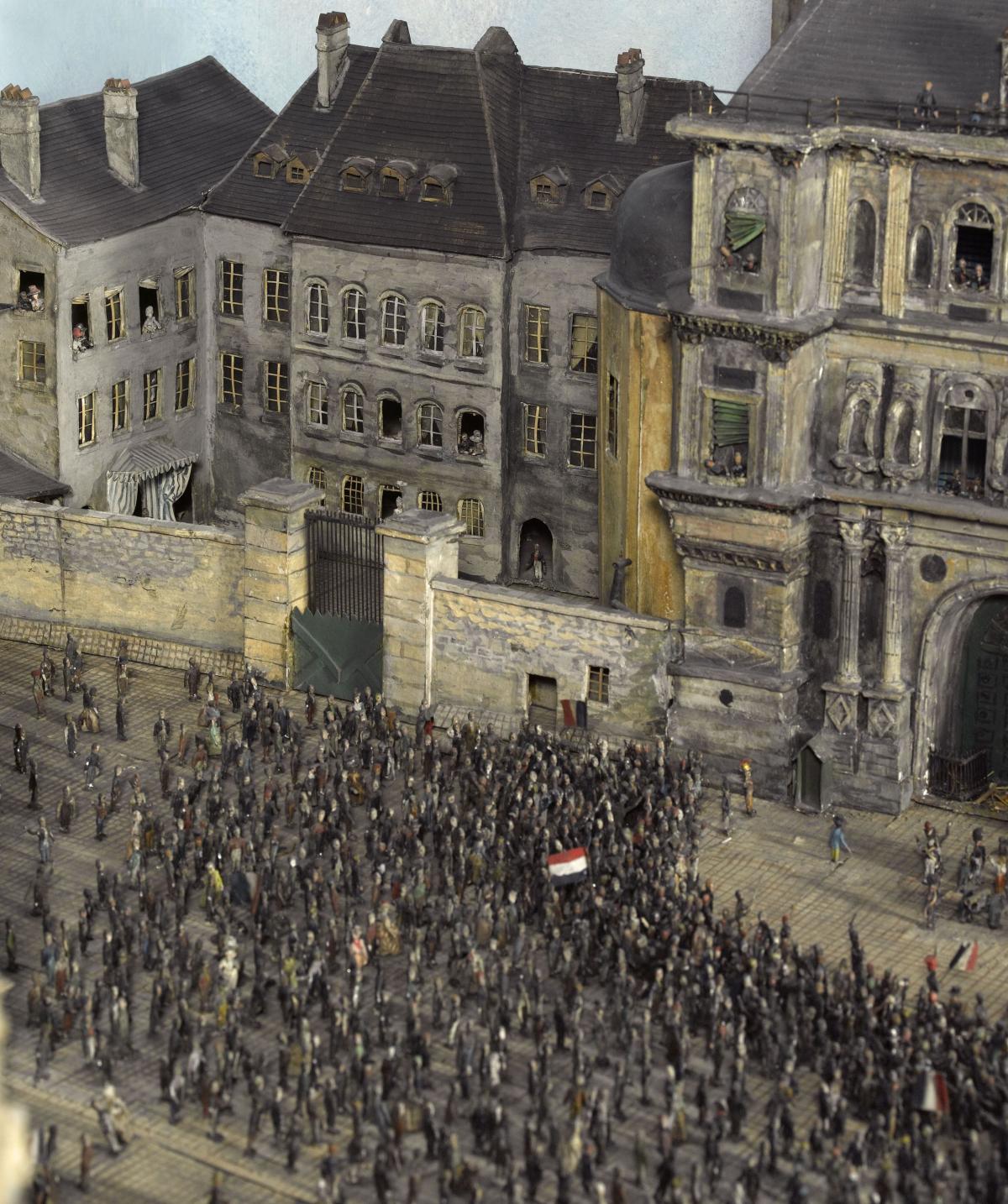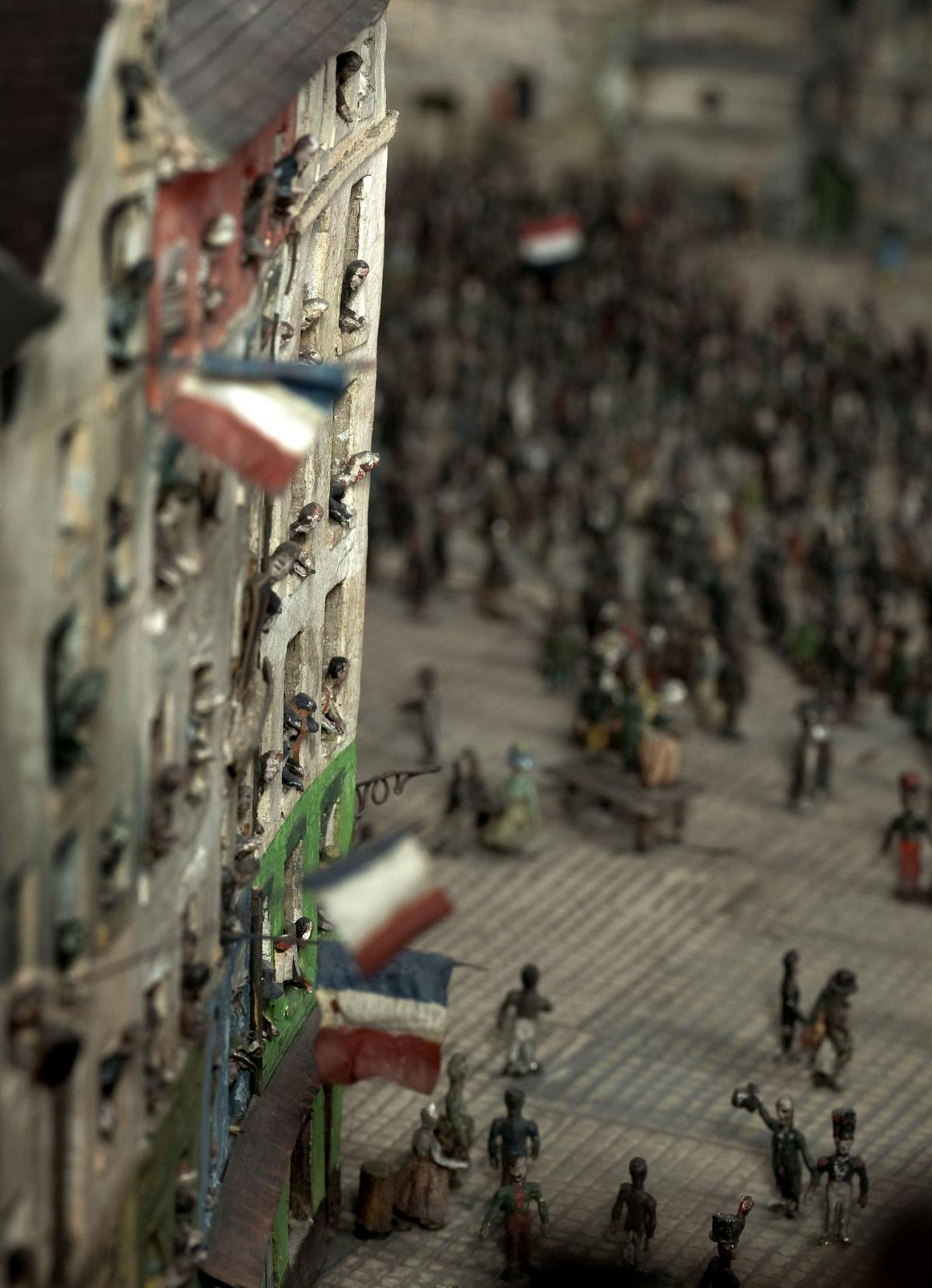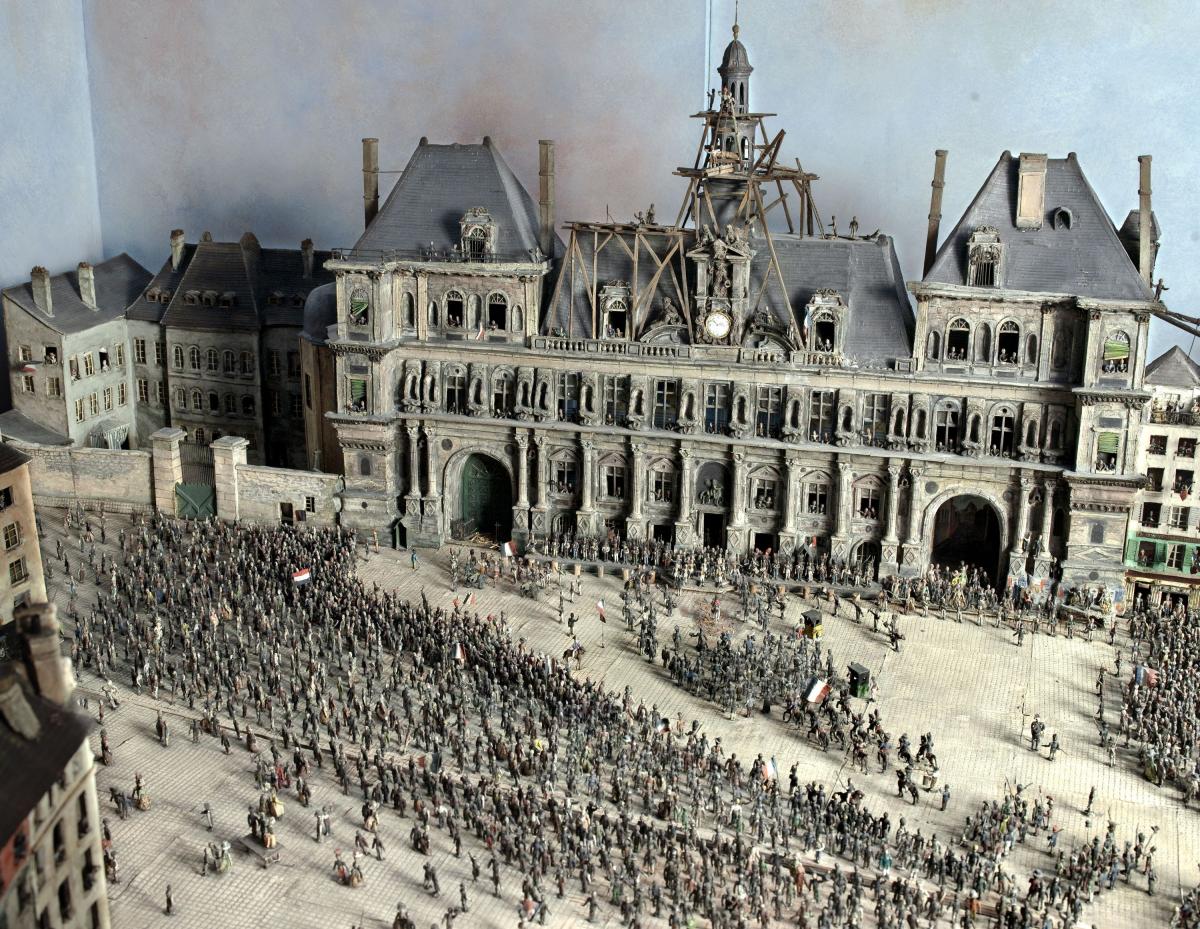The Place de l’Hôtel-de-Ville, on 31 July 1830, with the arrival of Louis-Philippe, Duc d’Orléans
Pierre-Louis Foulley
From the Middle Ages on, the Paris administration was found at the same location on Place de Grève. This meeting house, which was first called the “bourgeois parlor” or “house on piles”, was replaced in the 16th century during the reign of Francis I with a palace built by the Italian architect Domenico da Cortona, known as “Boccador”. Having undergone numerous modifications, this palace remained until 1871. In front of the palace, Place de Grève descended toward the Seine riverbanks (the word grève refers to a flat area covered with gravel or sand next to a body of water), where one of the ports that supplied Paris was located. It was one of the capital’s liveliest spots and the setting for a mixture of everyday life and exceptional events. All sorts of festivals and spectacles were organized there, as well as the most important capital executions. In 1803, the name of Place de Grève was changed to Place de l’Hôtel-de-Ville (City Hall Square).
During the Revolution of 1830, following the “Three Glorious Days” on July 27, 28 and 29, King Charles X abdicated and went into exile. On July 31 at city hall, his cousin Louis Philippe, the Duke of Orleans, was proclaimed Lieutenant General of the Kingdom before becoming Louis Philippe I, King of France.
In this monumental model made three years later in 1833, Pierre-Louis Foulley, a former Imperial soldier and captain of the French National Guard, shows the arrival of the Duke of Orleans to city hall, where he is welcomed by La Fayette. Seen from the quay, the square is a vast stage and we are the spectators. Hundreds of figurines represent the main actors. In the center, we recognize Louis Philippe on horseback, escorted by armed members of the National Guard, while La Fayette stands on the steps of city hall. Inside two sedan chairs are Benjamin Constant and the banker Laffitte, who, along with Thiers, were responsible for bringing the king to power. They are surrounded by numerous members of the National Guard. Curious spectators crowd the street, thronging toward the spectacle, and others watch from the windows. Some are waving flags. The city hall depicted is the one dating from the Renaissance, and work on the roof is the reason why scaffolding is present. The square shows its former irregular aspect, surrounded by many half-timbered buildings with turrets.



